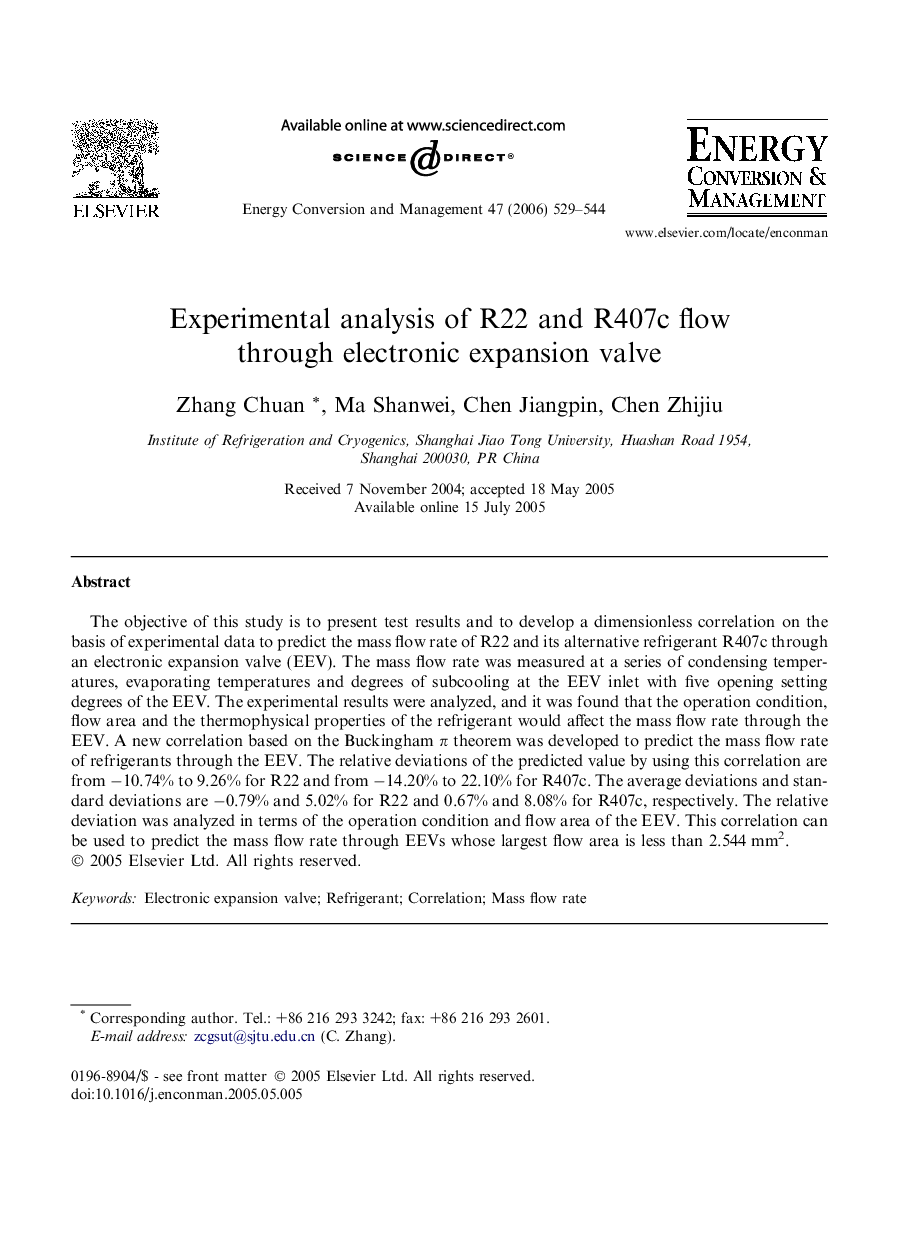| Article ID | Journal | Published Year | Pages | File Type |
|---|---|---|---|---|
| 762479 | Energy Conversion and Management | 2006 | 16 Pages |
The objective of this study is to present test results and to develop a dimensionless correlation on the basis of experimental data to predict the mass flow rate of R22 and its alternative refrigerant R407c through an electronic expansion valve (EEV). The mass flow rate was measured at a series of condensing temperatures, evaporating temperatures and degrees of subcooling at the EEV inlet with five opening setting degrees of the EEV. The experimental results were analyzed, and it was found that the operation condition, flow area and the thermophysical properties of the refrigerant would affect the mass flow rate through the EEV. A new correlation based on the Buckingham π theorem was developed to predict the mass flow rate of refrigerants through the EEV. The relative deviations of the predicted value by using this correlation are from −10.74% to 9.26% for R22 and from −14.20% to 22.10% for R407c. The average deviations and standard deviations are −0.79% and 5.02% for R22 and 0.67% and 8.08% for R407c, respectively. The relative deviation was analyzed in terms of the operation condition and flow area of the EEV. This correlation can be used to predict the mass flow rate through EEVs whose largest flow area is less than 2.544 mm2.
